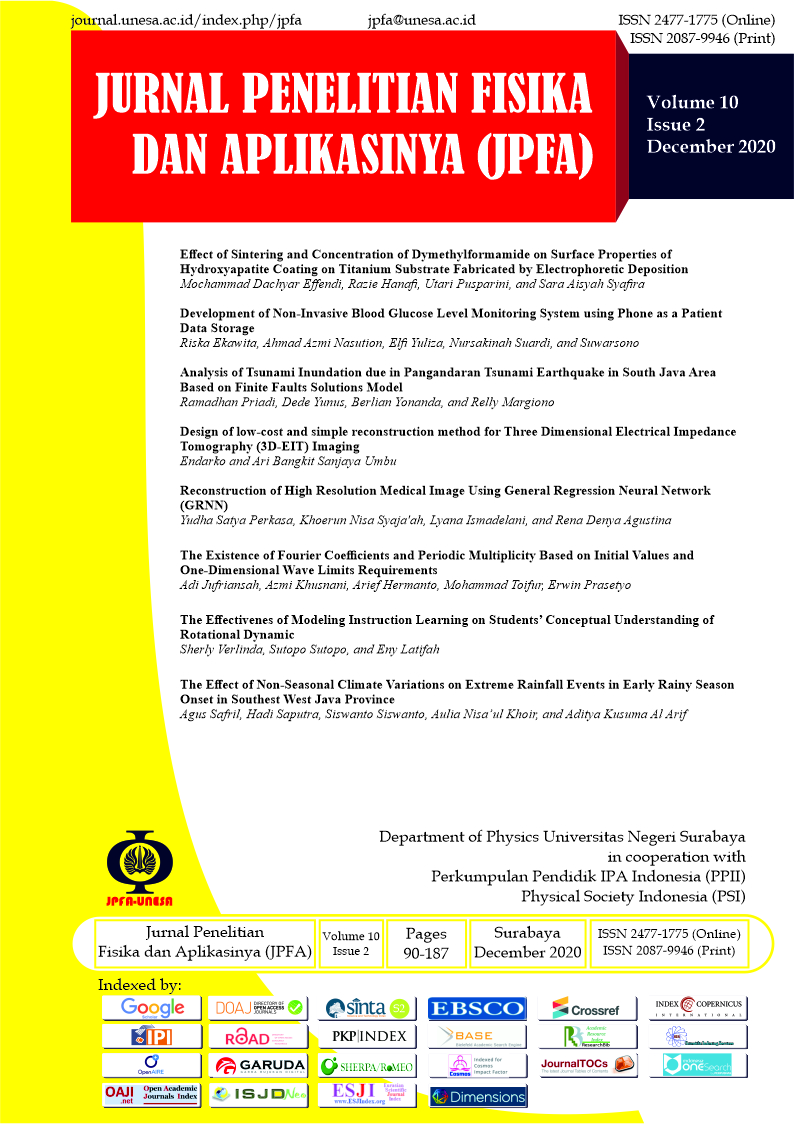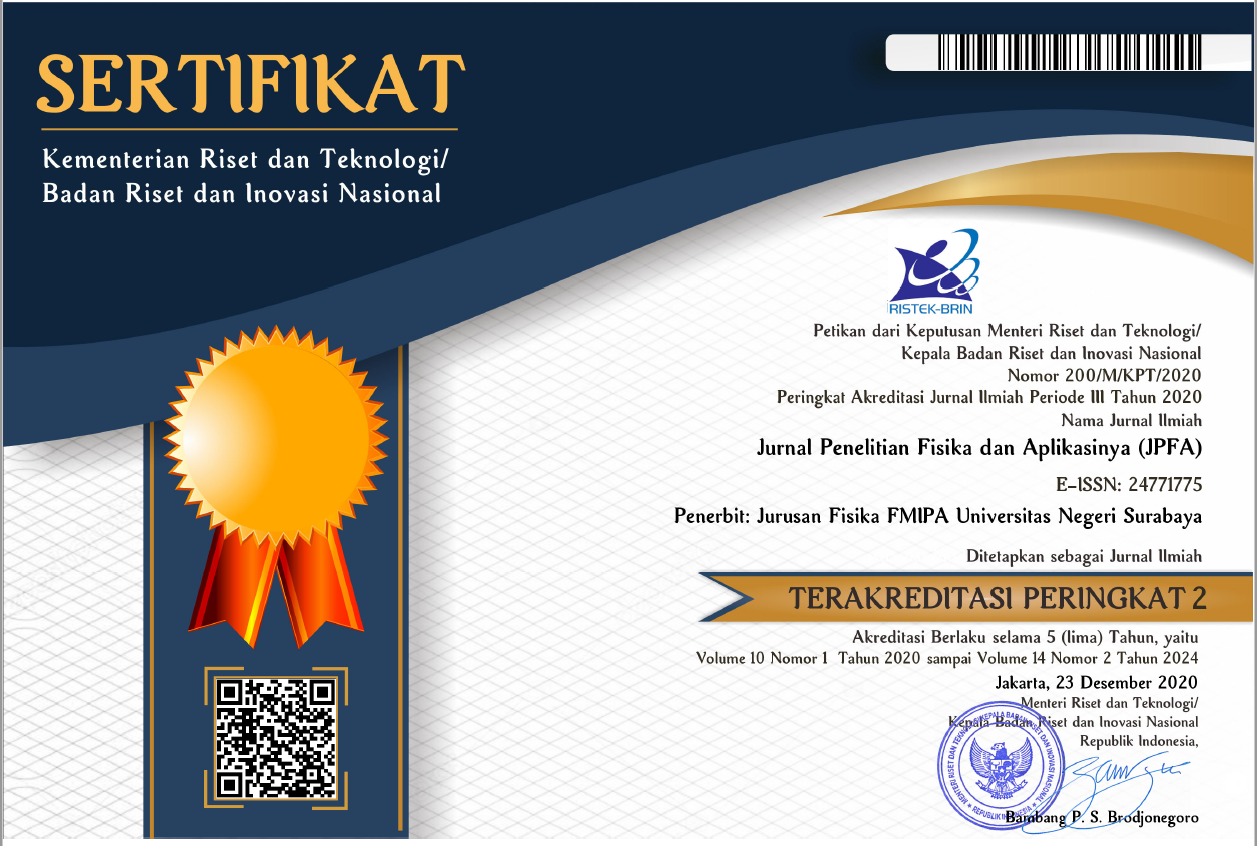The Effectivenes of Modeling Instruction Learning on Students Conceptual Understanding of Rotational Dynamic
DOI:
https://doi.org/10.26740/jpfa.v10n2.p158-172Keywords:
conceptual understanding, modeling instruction, rotational dynamicAbstract
Rotational Dynamics is one of the physics topics which is quite difficult for students. Several previous studies showed students difficulties on this topic, one of which is the aspect of students conceptual understanding. Modeling instruction is the effective approach to improve students understanding. This model is in line with constructivist theory and cognitive model theory. This research aimed to examine the effectiveness of modeling instruction that we developed to improve students' conceptual understanding of rigid body mechanics, where the knowledge of particle mechanics serve as anchor or bridging to develop model of rigid body. This research used mixed method with embedded experimental design. It used one group pretest-posttest design and involved 65 students of a high school in Malang as the subject. Data were gathered using test consisting of 17 multiple-choice items with explanation. The students scores were analyzed quantitatively using t-test and N-gain to measure the improvement of students understanding, while the students' reasons were analyzed qualitatively. The results showed the average students score increased from 1.62 to 9.92 with N-gain of 0.54 (in upper medium category). We concluded that the modeling instruction was effective to improve students conceptual understanding.
References
Downloads
Published
How to Cite
Issue
Section
License
Author(s) who wish to publish with this journal should agree to the following terms:
- Author(s) retain copyright and grant the journal right of first publication with the work simultaneously licensed under a Creative Commons Attribution-Non Commercial 4.0 License (CC BY-NC) that allows others to share the work with an acknowledgement of the work's authorship and initial publication in this journal for noncommercial purposes.
- Author(s) are able to enter into separate, additional contractual arrangements for the non-exclusive distribution of the journal's published version of the work (e.g., post it to an institutional repository or publish it in a book), with an acknowledgement of its initial publication in this journal.
The publisher publish and distribute the Article with the copyright notice to the JPFA with the article license CC-BY-NC 4.0.
 Abstract views: 1779
,
Abstract views: 1779
, PDF Downloads: 594
PDF Downloads: 594









